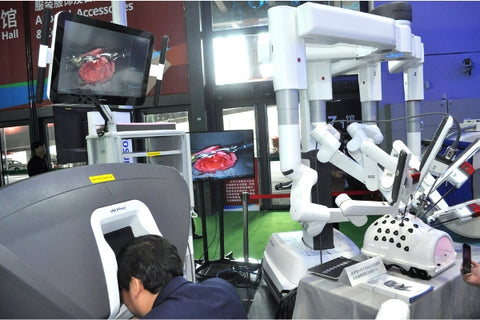Robotics are paving the way for automation; even wheelchairs are no longer missing the race towards making a better future for the disabled. These days, robots are no longer just a mass of hardware; instead, they have been designed to reflect and work on algorithms, making them smarter and better than just pieces of metal.
Robotic assistance devices are springing up all over the world, promising to change the façade of the technological gamut. From robotic legs for the disabled to robots that help the disabled, there is something for every disabled person out there. These ushers in the appropriate use of technology for the betterment of society.
Assistive robots for disabled

Assistive, as the word implies, is created mainly to help disabled people live their life normally, like you and me. Researchers at the University of Sheffield are trying to bring together arts, engineering, humanities, and robotics to assist people with disabilities. This way, the idea is to create an awareness of how disability is seen in the current day scenario, as well as change people’s perspectives on how human assistive robots can help in this regard.
Types of human assistive robots
Assistive robotics is paving the way for the future, with their potential to change the lives of the people suffering from disabilities. Through assistive technologies, people can benefit and lead healthy, independent and happy lives by being an active part of the society.
Surgical Robots

Intuitive Surgical, Johnson & Johnson and Medtronicare are some famous names that have already carved their name in the surgery niche. Each product line focuses on different invasivFe robotic surgeries. A good example of one surgery robot is Da Vinci System, which performs surgeries in the field of urological, gynaecological and bariatric surgical procedures.
Assistive device for eating
Robots can help disabled people in different ways and forms. Kinova Robotics's Jaco arm has been developed as an assistive arm for people who are confined to a wheelchair. The arm comes well equipped with a three-fingered gripper and six degrees of freedom and can be attached to an electric wheelchair with ease.
On similar grounds, researchers at the University of Washington have developed a similar type of autonomous arm, which can prove to be one of the assistive devices for eating. The Assistive Dexterous Arm (ADA) makes use of algorithms and sensors, which helps it identify the different food forms and the ways it can feed the end user. The arm is so sensible in its approach, it can even differentiate between a carrot and a banana. Such is the smartness of the algorithms which makes ADA the technology of the future. Read about Kitchen Robots here.
Walk assist robot for disabled
The moment one talks about exoskeletons, the concept of Iron Man’s suit jumps to mind. Cyberdyne’s Hybrid Assistive Limb (HAL) exoskeleton is no exception to this thought. The suit places sensors on the human skin, which has been designed to send and detect small electrical signals within the wearer’s body.
Devices like HAL’s exoskeleton don’t come cheap. The monthly rental itself is expected to be around $1,000; even though the prices will come down as the demand and supply increase. The exoskeleton concept is rapidly capturing the market, making a place for itself amongst the people.
Robot legs for disabled

Could a pair of robotic trousers be the answer to everyone’s problems? Well, this seems to be the case with the robotic trousers, unveiled by a team of British researchers’ way back in 2018. While the robotic pants might seem like brightly colored Lycra, the reality is way different than what meets the eye. The pants are equipped with robotic muscles and air bubbles, which can help a person stand up.
The robotic pants make use of nanoparticle science, along with functional 3-D printing and artificial muscle technology. The idea is to replicate the human muscle and provide the same strength and support to the disabled, thereby enabling them to stand up comfortably.
Such are the robots that help the disabled; with so many different options available in the market, there is a lot to look forward to. Ideally, these devices for disabled persons are becoming one of the trendsetters in the market, helping disabled people live their lives in a more comfortable manner.




